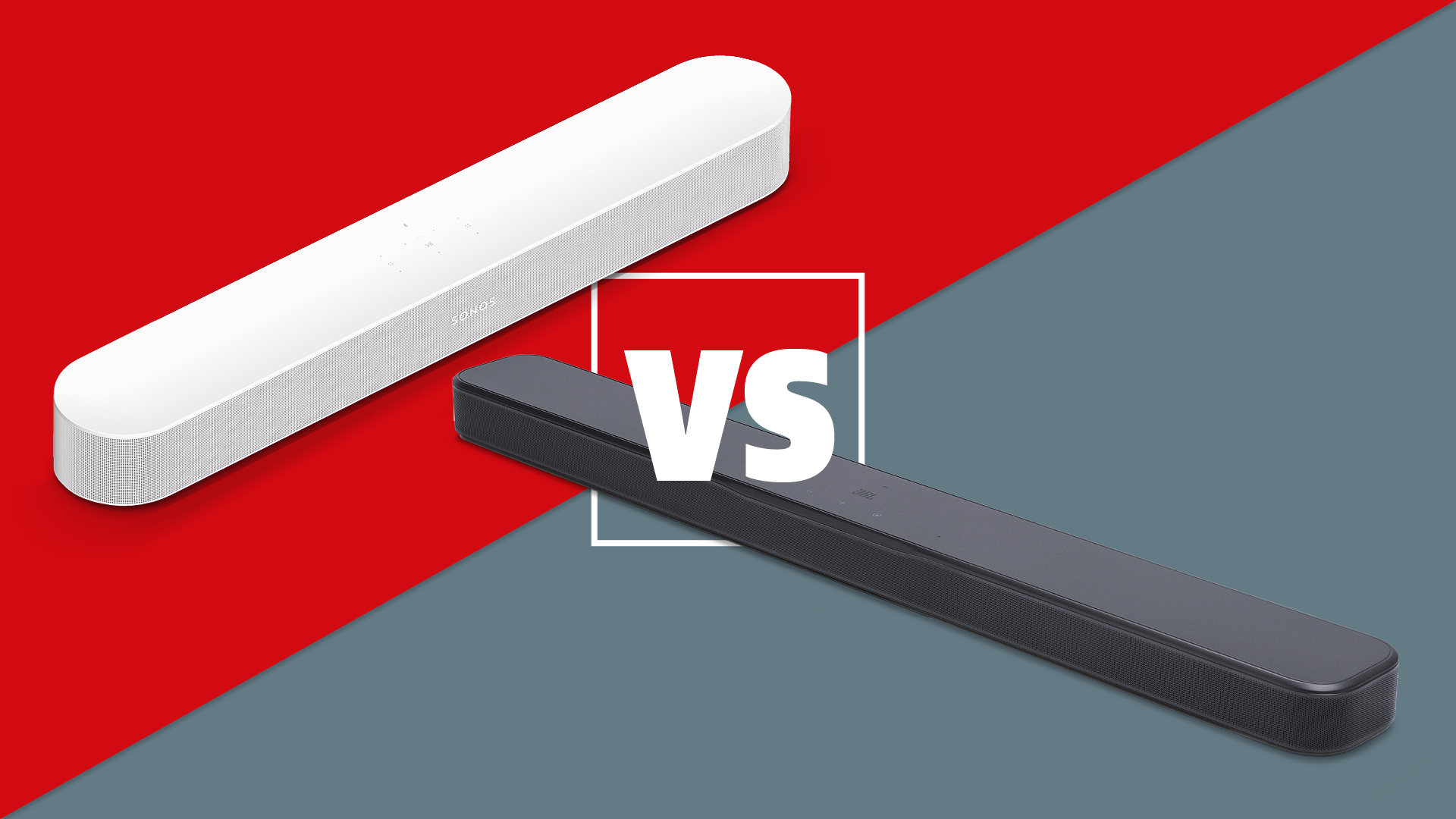Samsung Galaxy S23 Ultra vs Apple iPhone 14 Pro Max: which is better?
It's Ultra vs Pro in the battle of the big boys
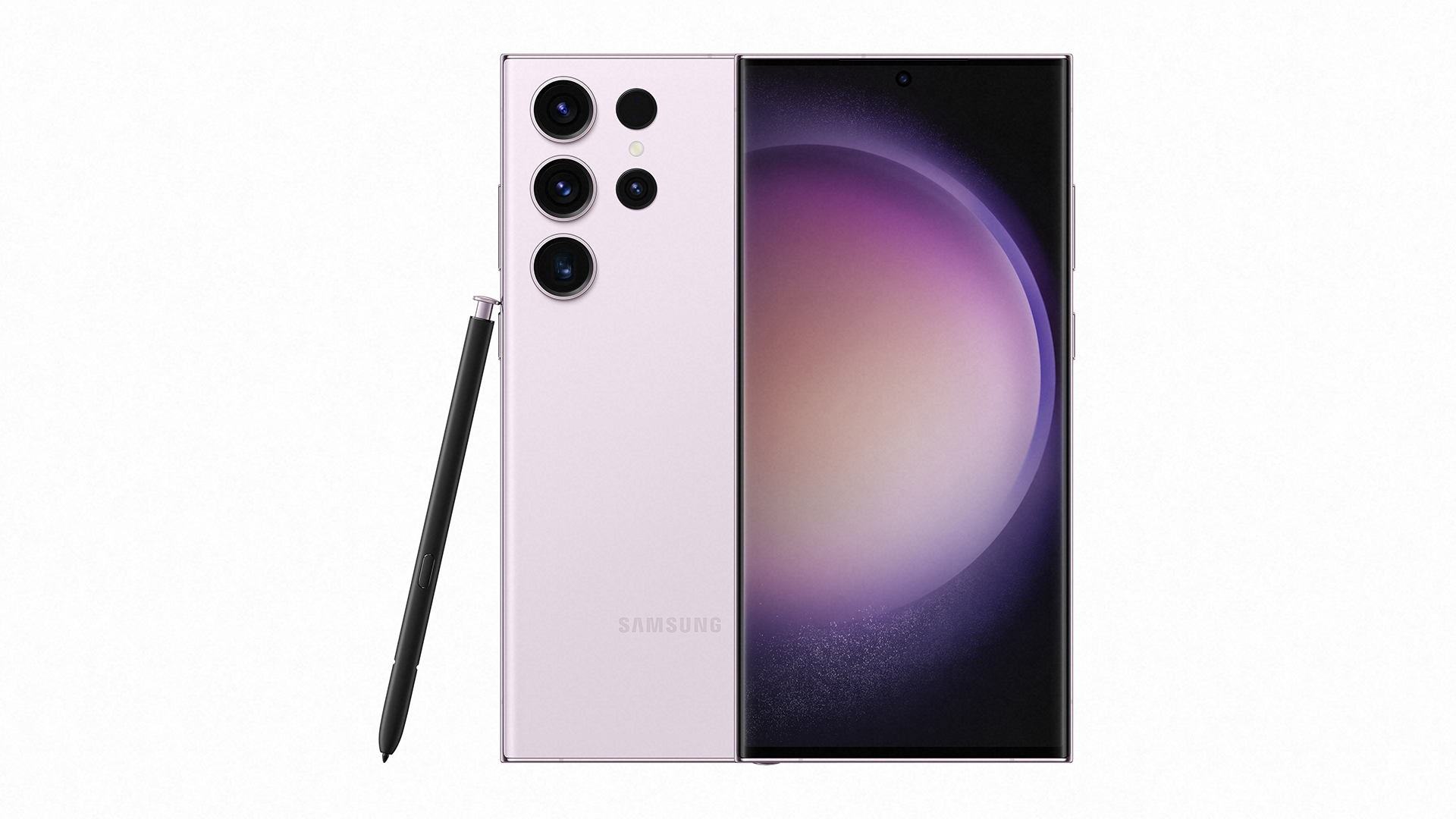
Screen size: 6.8in
Resolution: 1440 x 3088px
OS: Android 13 (One UI 5.1)
RAM: 12GB
Samsung's latest smartphone packs an awesome camera, impressive Dolby Atmos speakers and a big, beautiful screen, making it a real contender for your hard-earned. But it faces stiff competition from Apple and Sony for the AV smartphone crown.
Pros
- 120Hz display
- Next-gen camera
- Fantastic build
Cons
- Expensive
- Minor AV updates
- Tough competition
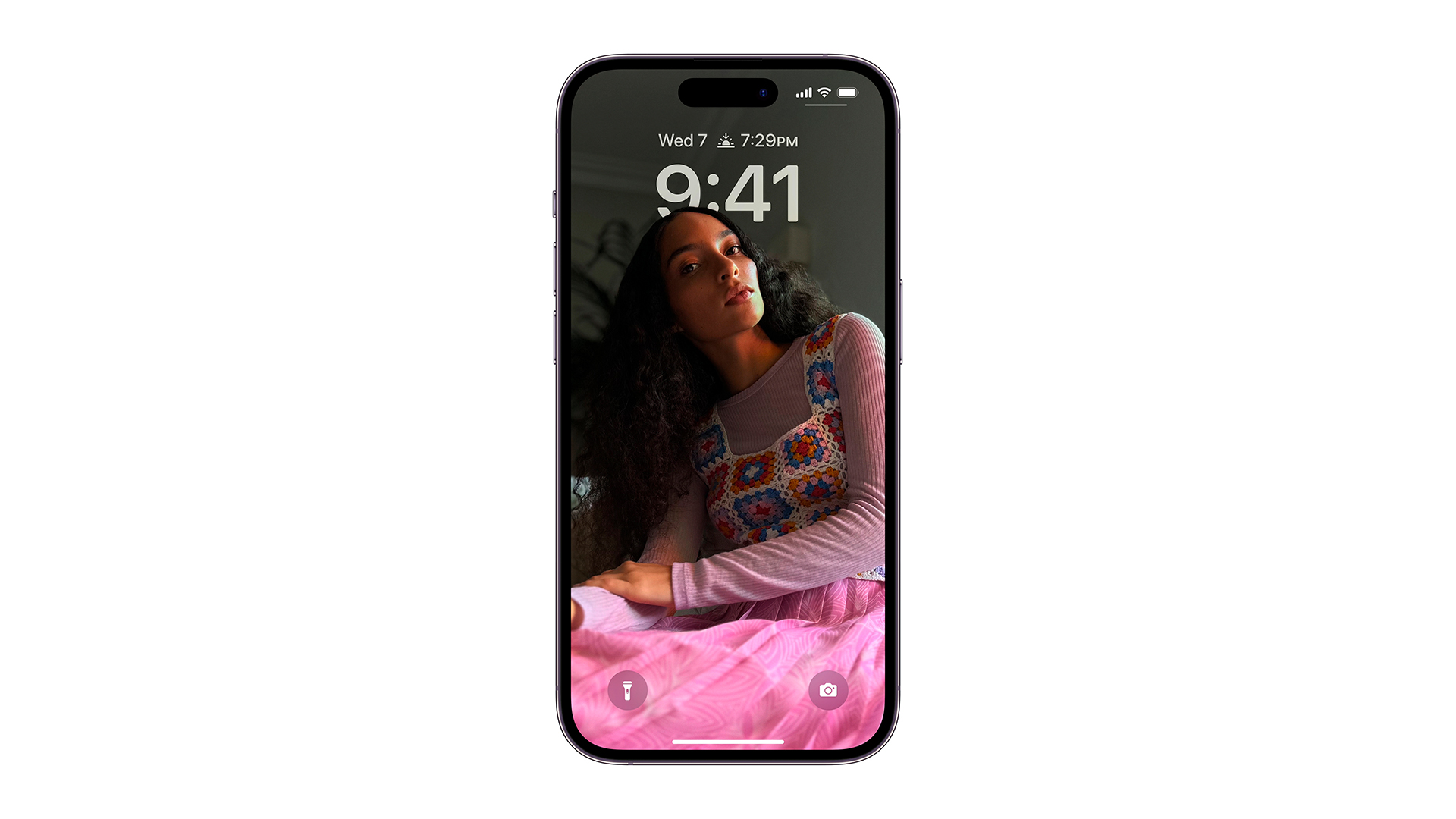
Screen size: 6.7in
Resolution: 1290 x 2796px
OS: iOS 16
RAM: 6GB
The iPhone 14 Pro Max might be a little smaller than the S23 Ultra, but its picture tech is more advanced, it sounds better through headphones and the new Dynamic Island is a great innovation. The battery lasts longer, too. A deserved What Hi-Fi? Award winner.
Pros
- Dynamic, natural display
- Exceptional sound
- Great camera
Cons
- Familiar design
- Bettered for speaker sound
- Pricey
Apple and Samsung have some serious history. As well as competing fiercely for the hearts of smartphone users the world over, the two companies engaged in a series of acrimonious legal battles throughout the 2010s focussed on their relative mobile technologies. Thankfully the courtroom drama is now behind us, but the smartphone war rages on. The latest salvo? Samsung's Galaxy S23 range, which was recently unveiled at the annual Samsung Unpacked showcase.
The most premium phone in the new range is the Samsung Galaxy S23 Ultra, which boasts a big screen, powerful new processor and supercharged cameras. How does it compare with Apple's equivalent, the iPhone 14 Pro Max? Let's find out.
Samsung Galaxy S23 Ultra vs Apple iPhone 14 Pro Max: price
These are the range-toppers for both Apple and Samsung's best smartphone lines, so we're talking the best of the best here. As such, you pay a premium.
The Samsung Galaxy S23 Ultra starts at £1249 / $1199 / AU$1949 for the 256GB model. Step up to the 512GB variant, and you'll pay £1399 / $1379 / AU$2249, while the 1TB model will cost you £1599 / $1619 / AU$2649.
The iPhone 14 Pro Max starts cheaper, but for a lower capacity. Your £1199 / $1099 / AU$1899 gets you a 128GB model – the 256GB model is slightly pricier than the S23 Ultra equivalent, at £1309 / $1199 / AU$2099. The 512GB model costs £1529 / $1399 / AU$2419, while the 1TB variant is £1749 / $1599 / AU$2769.
First blood, Samsung.
Winner: Samsung Galaxy S23 Ultra
The latest hi-fi, home cinema and tech news, reviews, buying advice and deals, direct to your inbox.
Samsung Galaxy S23 Ultra vs Apple iPhone 14 Pro Max: design
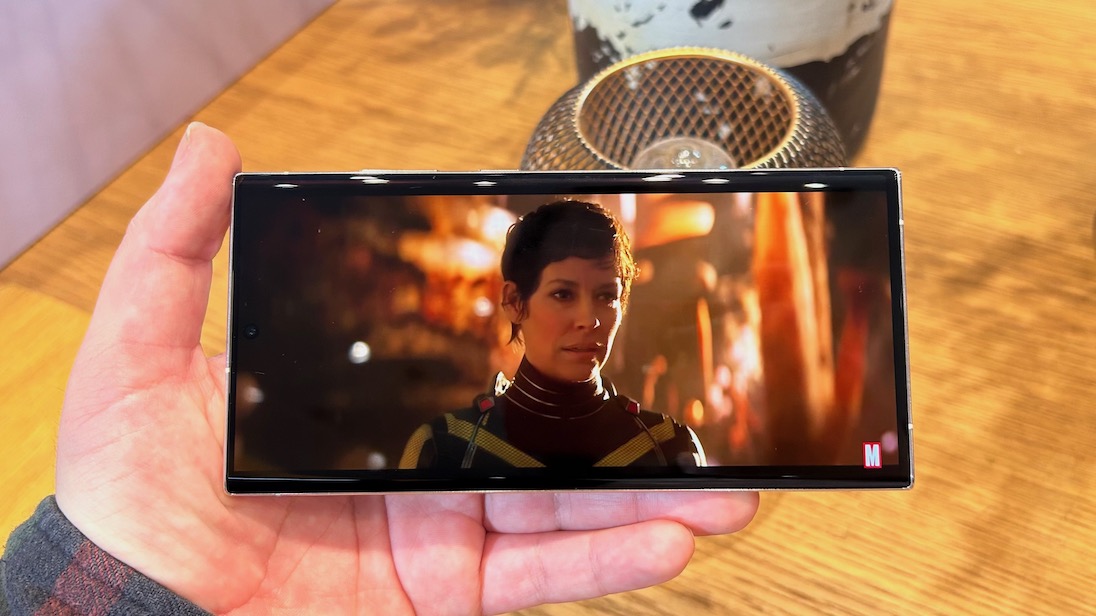
For the iPhone 14 range, aesthetically at least, Apple has taken the 'if it ain't broke' approach. Hence the iPhone 14 Pro Max looks very similar to the iPhone 13 Pro Max.
There are some differences. The iPhone 14 Pro Max has two new colours (Space Black and Deep Purple) to go with the silver and gold that were already available. The rear camera cluster is also bigger, though only slightly. But the biggest change is that Apple has nixed the notch in favour of the new 'Dynamic Island', which houses various sensors and encroaches onto the screen of the iPhone 14 Pro Max in a very different way.
The discrete, pill-shaped space dynamically alters in size and shape depending on what you're doing. Play music, for example, and it shows a cute little animation. Connect your AirPods, and it shows you helpful information. It's neat and inventive, and makes a good fist of taking a negative (a hole in the screen) and turning it into a positive.
The S23 Ultra also sticks with the same design language as its predecessor. There are the same squared off corners (like it's power dressing in the 1980s), and the same camera arrangement on the rear. There are no eye-catching software innovations like the Dynamic Island, either. Instead, it seems Samsung has saved its improvements for the performance side of things.
Winner: Apple iPhone 14 Pro Max
Samsung Galaxy S23 Ultra vs Apple iPhone 14 Pro Max: display
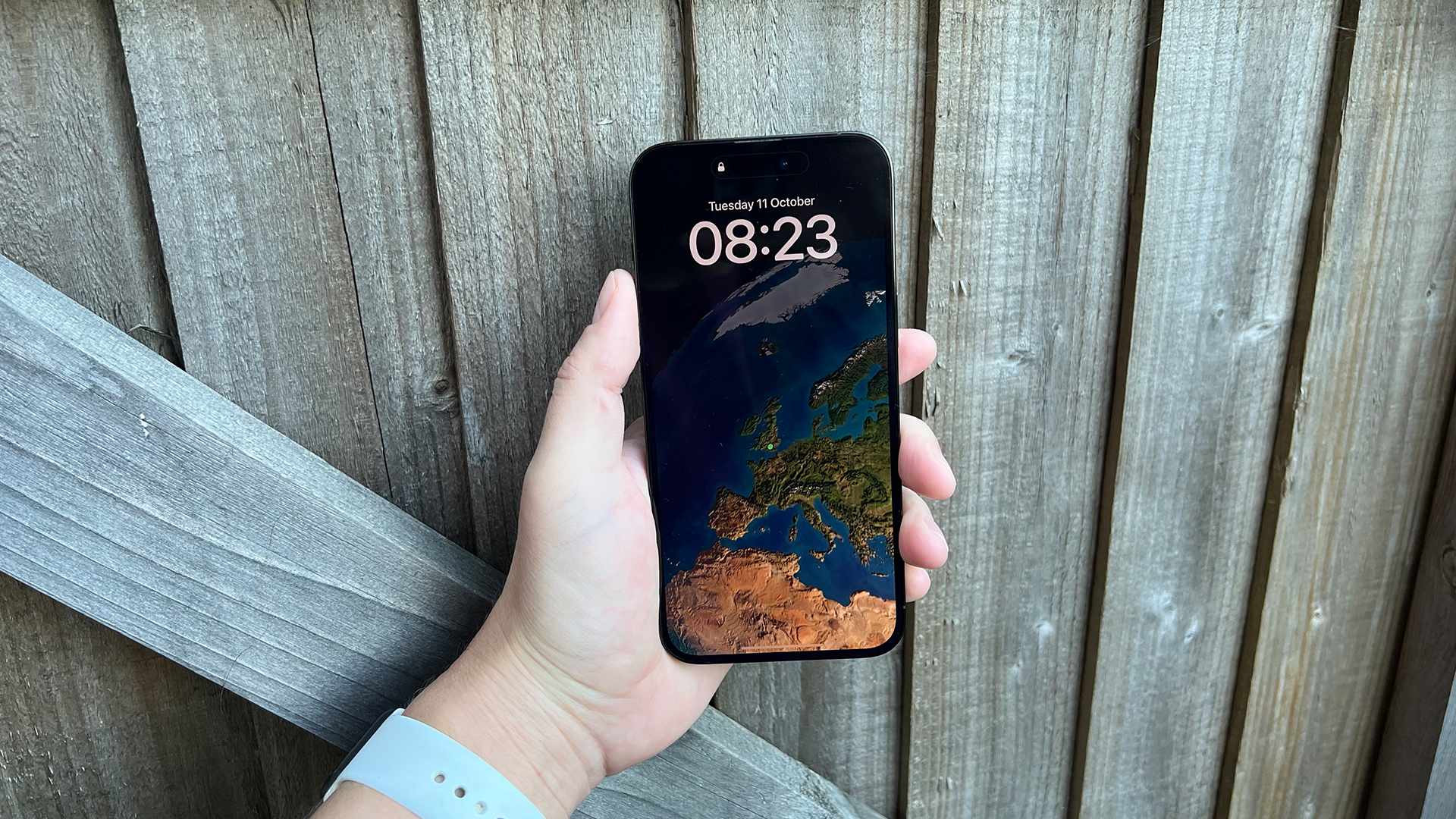
The iPhone 14 Pro Max's screen is a thing of beauty, a 6.7-inch slab of OLED gorgeousness, with a peak brightness of 1600 nits (up from 1200 nits on the iPhone 13 Pro Max). It supports the Dolby Vision, HDR10 and HLG formats of HDR, and can drop its refresh rate all the way down to just 1Hz. This helps it conserve power when it's not needed, and enables the always-on screen feature – that means you still get notifications and the clock showing the time even when the phone is locked.
The extra brightness, while not huge, is noticeable during viewing. It also has a slightly richer tone, which adds warmth to the image, especially skin tones. Colours generally are more vibrant as well, while the contrast has been beefed up.
The Galaxy S23 Ultra's screen is marginally bigger (6.8 inches to the 14 Pro Max's 6.7 inches), and uses an AMOLED panel, which are traditionally brighter with more dynamic colours. The screen is a joy to interact with, and the picture performance is, on the whole, very good. Occasionally skin tones appear a little too warm, but it's by no means unpleasant. And you can tweak this in the settings.
It also throws up a decent amount of detail, even in darker areas of the picture. But the screen looks disappointing when placed side by side with Apple's flagship – the iPhone 14 Pro Max outdoes the S23 Ultra in every aspect of the picture, from more natural and realistic colours and skin tones and more balanced contrast which results in more subtle detailing. The motion blur apparent on the Samsung is also conspicuous by its absence on Apple's big boy.
Winner: Apple iPhone 14 Pro Max
Samsung Galaxy S23 Ultra vs Apple iPhone 14 Pro Max: power and storage
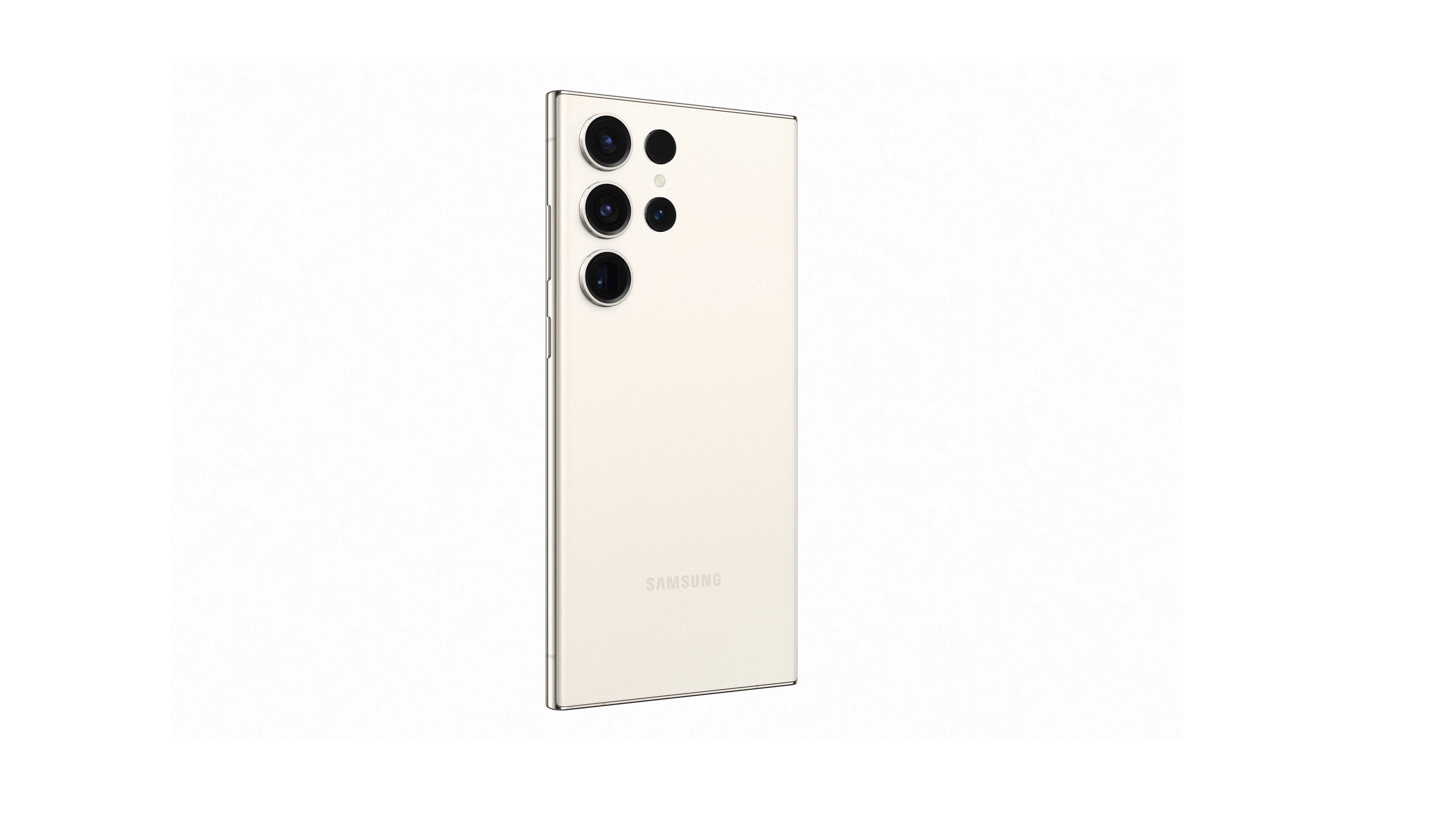
Apple's iPhone 14 Pro models have made a real break from the non-Pro variants by using a faster processor. This is the first time Apple has bestowed its Pro iPhones with better chips than the non-Pro models.
The 14 Pro Max runs on an A16 Bionic chip. According to Apple, this CPU is 20 per cent more power efficient than the A15, while the GPU boasts 50 per cent more memory bandwidth. We've found the 14 Pro Max a joy to use, with no delays or stuttering no matter what processor-hungry tasks you demand of it.
But Samsung has an ace up its sleeve. For the first time, it has dropped its policy of different processors for different regions, instead kitting out all international variants of the S23 Ultra with a Qualcomm chip (instead of fitting some with its own Samsung Exynos chip). And not just any Qualcomm chip, but one modified especially for the Samsung Galaxy S23 range (the S23, S23 Plus and S23 Ultra all feature the same chip).
Called the Qualcomm Snapdragon 8 Gen 2 Mobile Platform For Galaxy, it's overclocked, with its prime CPU core clocked at 3.36GHz (instead of 3.2GHz) and the Adreno 740 GPU clocked at 719MHz (instead of 680MHz). That results in blisteringly fast performance and response times, with no noticeable stuttering or lag when opening apps.
In terms of storage, the iPhone has more options. It's available in 128GB, 256GB, 512GB and 1TB flavours, while the Samsung only comes in 256GB, 512GB and 1TB variants.
Winner: Draw
Samsung Galaxy S23 Ultra vs Apple iPhone 14 Pro Max: camera

A smartphone's camera isn't our bread and butter – we're more concerned with audio visual performance – but it is still a major part of any mobile device, and likely one of the most-used features. The iPhone 14 Pro Max boasts one of the best in the market.
There's a 48-megapixel main shooter with optical image stabilisation (OIS); a 12-megapixel ultra wide with a 120-degree field of view; and dual 12-megapixel telephotos, both of which also have OIS. But just as important is the processing grunt that goes on inside. Apple's computational photography engine has won plaudits across the board for its post-processing, and if you're prepared to spend a bit of time learning how to best use it, you can create some truly stunning results.
Can't be bothered? We can't blame you. But don't worry, the 14 Pro Max has a range of different shooting modes that will up your photography game without you lifting a finger. Portrait mode (with advanced 'bokeh' effect and depth control) creates those blurry backgrounds that really make your subject stand out, while night mode now has separate night mode portraits enabled by a LIDAR scanner to get great results even in the gloomiest of dive bars. There are also separate modes for panorama, macro photography, and you can shoot in Apple ProRAW and edit the original files (as long as you're prepared for huge file sizes).
From a hardware and software point of view, it's one of the most comprehensive photography packages ever found in a smartphone. So the Galaxy S23 Ultra has its work cut out.
But Samsung isn't coming off a standing start. The S22 Ultra has one of the best cameras going, with its Adaptive Pixel tech allowing the capture of 108-megapixel (Re-mosaic mode) and 12-megapixel (Nona-binning mode) images at the same time to create a more detailed and brighter image. The dual telephoto lenses (both 10 megapixels, one with 3x optical zoom and one with 10x) make for a crisper zoomed-in image, and the sensor was re-engineered for the S22 for optimal performance in low-lighting.
Other perks? Single take (to use a group of different lenses simultaneously), director’s mode, object eraser, remaster and pro mode, all of which elevate the photography performance to degrees other smartphones can only dream of.
The S23 Ultra continues this trend. It upgrades the main sensor from 108 megapixels to a staggering 200 megapixels, which means even more detail crammed into the image. A new Astro Hyperlapse camera mode is made specifically for shooting the night sky, while there have been improvements to night photography more generally, thanks to the adaptive pixel sensor. The OIS is twice as wide as the S22 Ultra's, meaning less blur, and there's added noise reduction via multi-frame and AI technology. The selfie camera has even been upgraded, from 10 megapixels on the S22 Ultra to 12 megapixels on the S23 Ultra.
In practice, the camera on the S23 Ultra is brilliant, fusing top-notch performance with intuitive software, meaning even the most amateur of photographers can snap a quality image.
When it comes to Apple and Samsung, camera tech is very much a game of leapfrog – whichever phone came out most recently generally features the better camera. And so it proves this time.
Winner: Samsung Galaxy S23 Ultra
Samsung Galaxy S23 Ultra vs Apple iPhone 14 Pro Max: battery
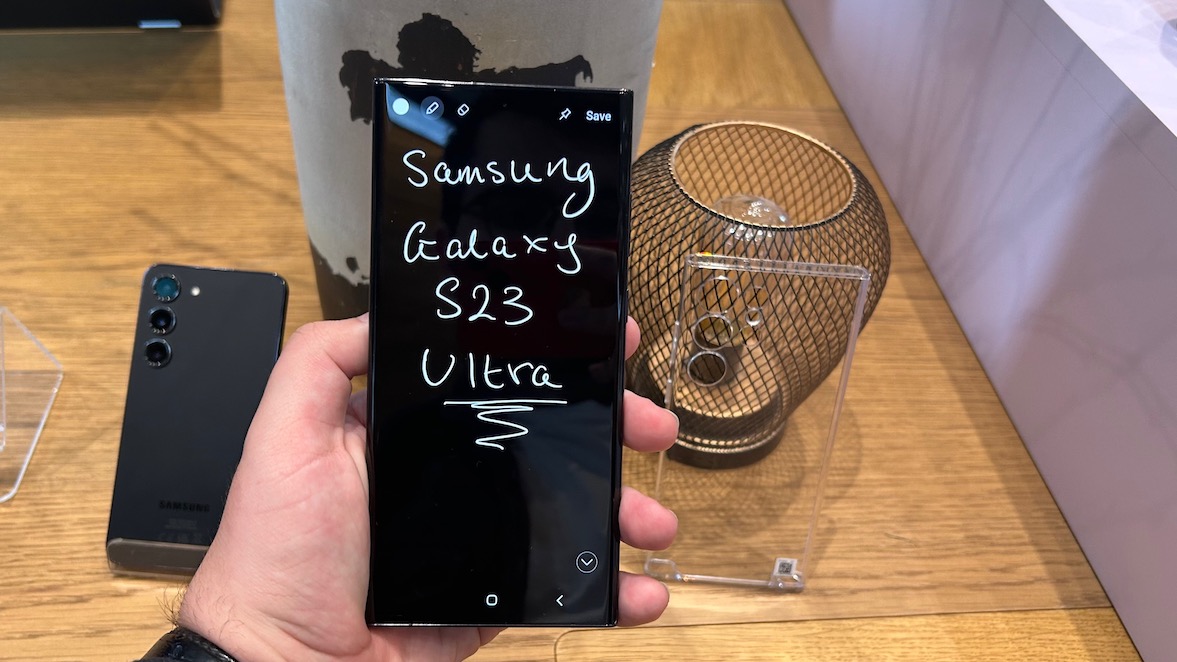
Apple doesn't publicise its battery capacities, preferring to talk about usage hours instead. Indeed, on paper, the iPhone 14 Pro Max's 4323mAh battery looks distinctly underwhelming compared with the S23 Ultra's 4855mAh model. But does that tell the whole story?
Apple claims the 14 Pro Max can stream video for 29 hours before giving up the ghost, while Samsung says the S23 Ultra can do the same for just 26 hours. So Apple has squeezed more from less.
The S22 Ultra's battery life was a bit of a disappointment too, so it's a shame Samsung hasn't poured more resources into this vital area.
Winner: Apple iPhone 14 Pro Max
Samsung Galaxy S23 Ultra vs Apple iPhone 14 Pro Max: sound
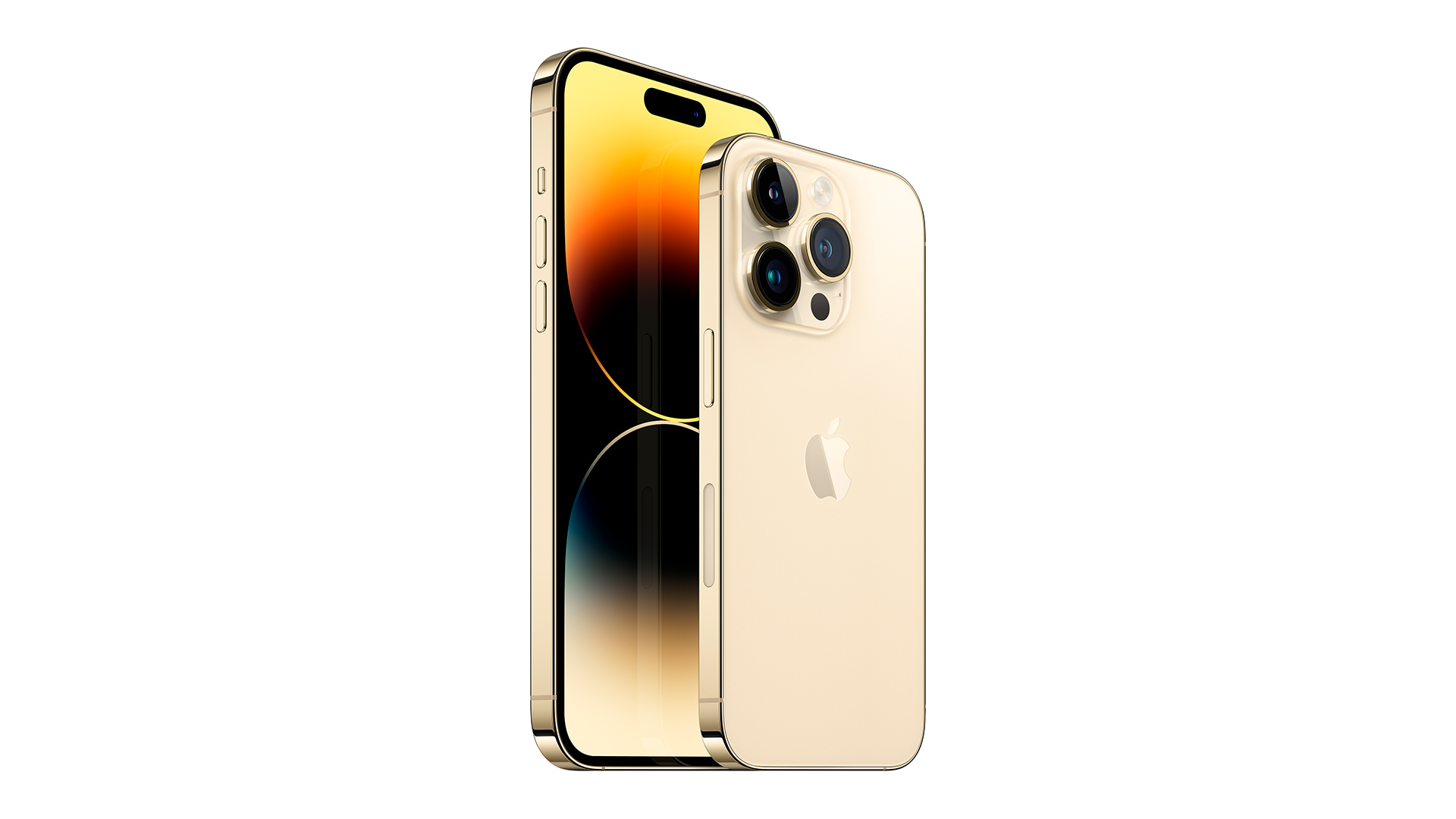
Sonically speaking, the S23 Ultra has it the wrong way around. Which is to say: audio played from its speaker sounds better than many of its rivals. But that played via headphones? Not so much.
The Dolby Atmos stereo loudspeakers provide a wide, well organised audio presentation with plenty of warmth and naturalness. The sound has a touch more depth than the iPhone's too, though the iPhone's speakers can go louder than the S23 Ultra's.
But connect a pair of headphones, and the situation is reversed. The S23 Ultra still provides a detailed, clear delivery, but it lacks its speakers' warmth and natural tone. Compared to the iPhone's rich, natural presentation, the Samsung sounds a little mechanical and analytical. The iPhone comes up trumps in terms of dynamics too, and while both excel for spatial audio playback, the Samsung just edges it.
Nevertheless, the iPhone 14 Pro Max performs excellently in this area. It's punchier, more rhythmic, weightier, clearer and more dynamic than the S23 Ultra through headphones. And how often are you going to listen to the phone's speaker, instead of headphones or a decent Bluetooth speaker?
Winer: Apple iPhone 14 Pro Max
Samsung Galaxy S23 Ultra vs Apple iPhone 14 Pro Max: verdict
Two flagship handsets, two absolutely stunning propositions. So which is right for you?
The Samsung Galaxy S23 Ultra is quite a package. The 200-megapixel camera is truly excellent, its Dolby Atmos speakers are better than most smartphones', and the new custom chip also provides excellent usability all round.
Of course the iPhone 14 Pro Max is a five-star device, and a great option for power users who favour the Apple ecosystem. Its screen is much better, it sounds superior through headphones, and its battery lasts longer than the S23 Ultra's. For us, it's the better device, but the Android faithful will still find a lot to like about Samsung's latest.
MORE:
Also consider the Apple iPhone 13 Pro Max
Read our Sony Xperia 1 IV review
Check out the best smartphones: the best phones for music and movies
Joe has been writing about tech for 20 years, first on staff at T3 magazine, then in a freelance capacity for Stuff, The Sunday Times Travel Magazine (now defunct), Men's Health, GQ, The Mirror, Trusted Reviews, TechRadar and many more. His specialities include all things mobile, headphones and speakers that he can't justifying spending money on.

